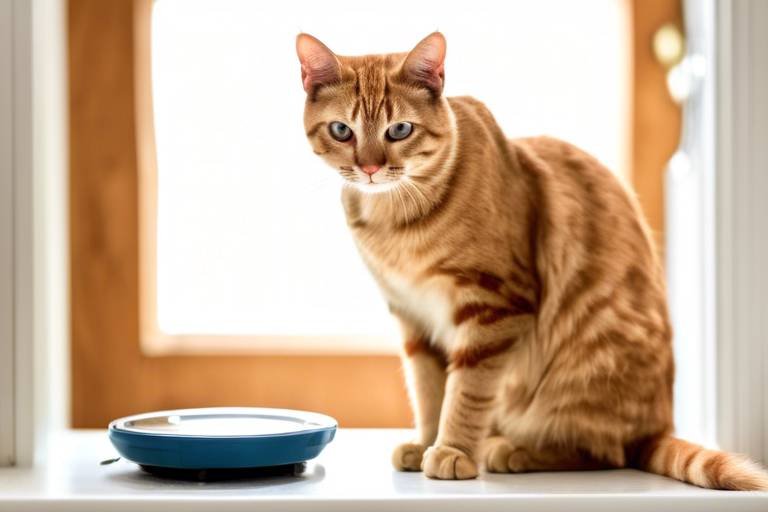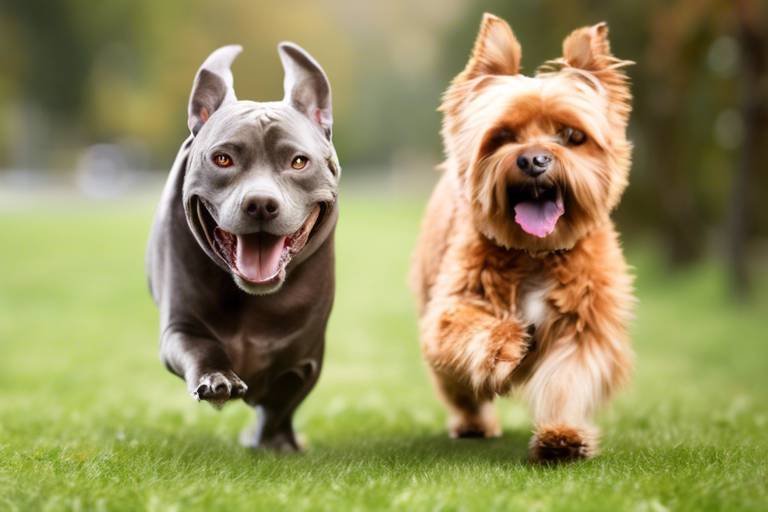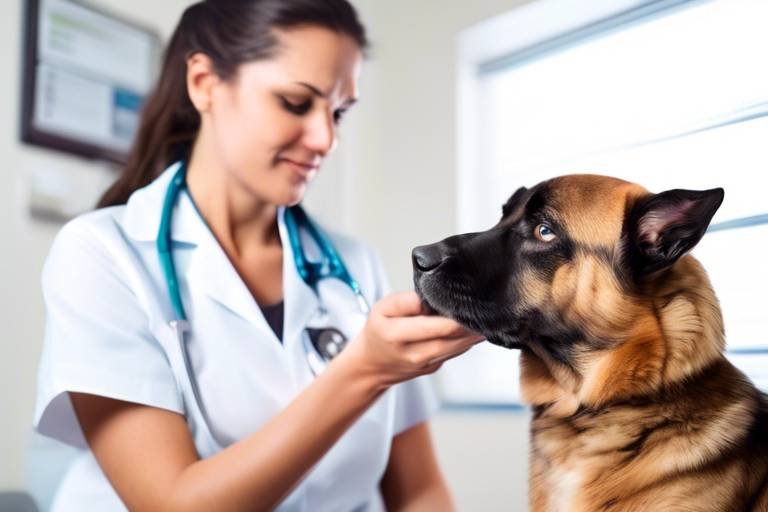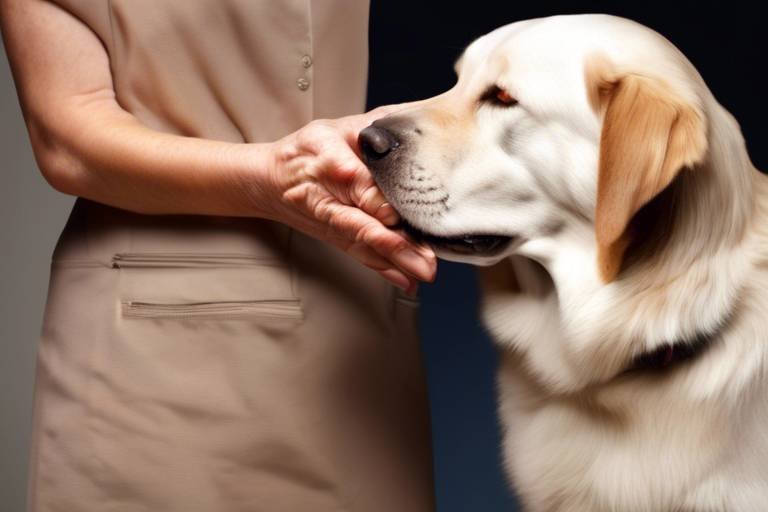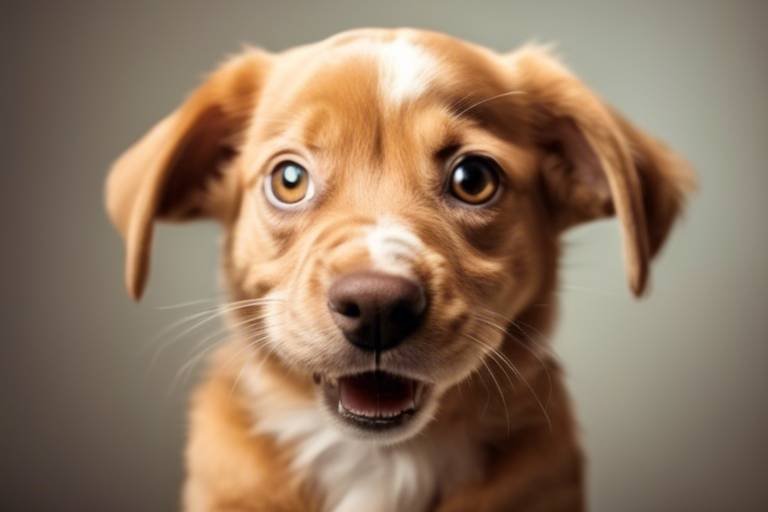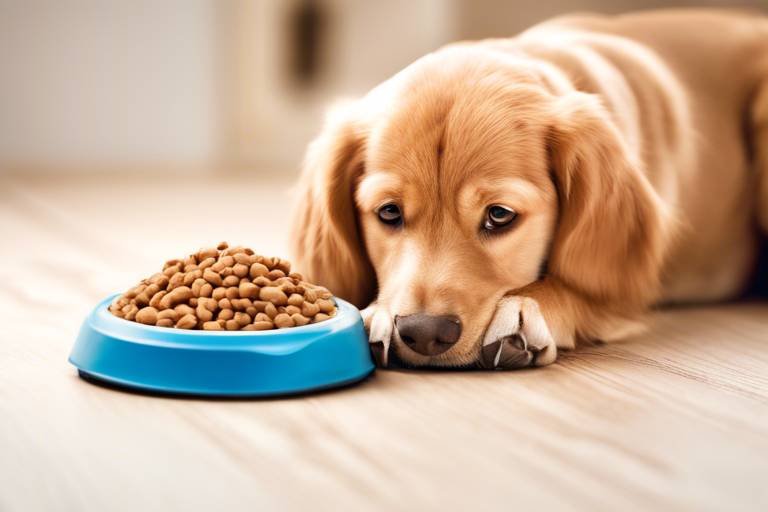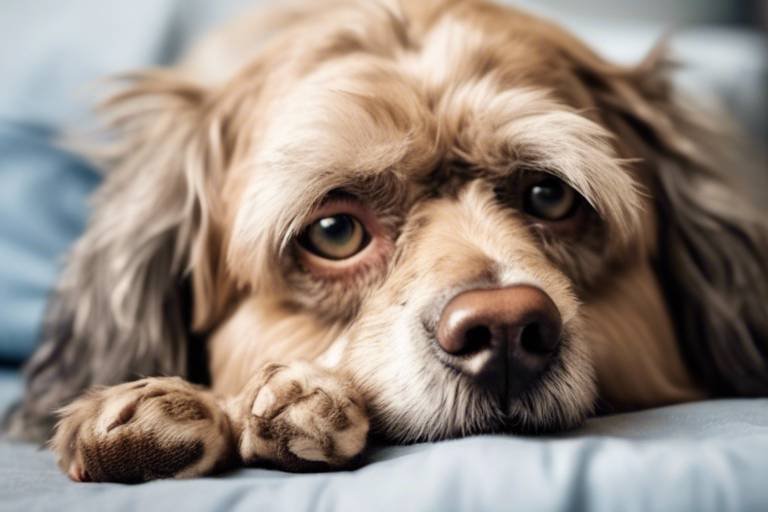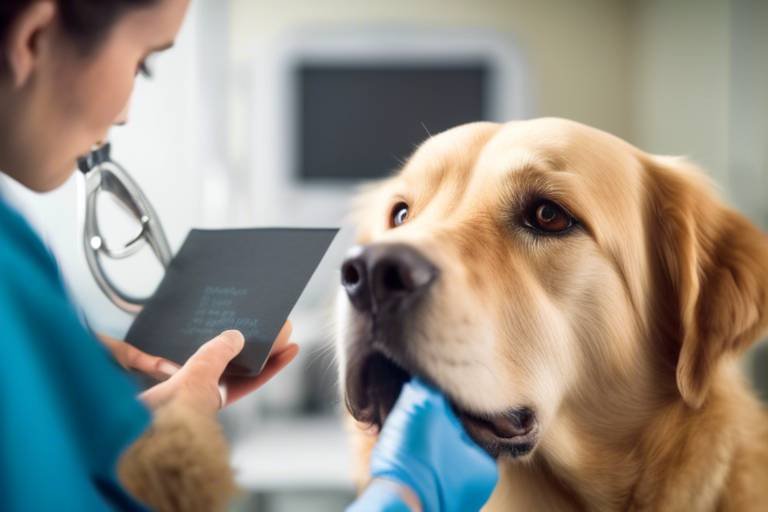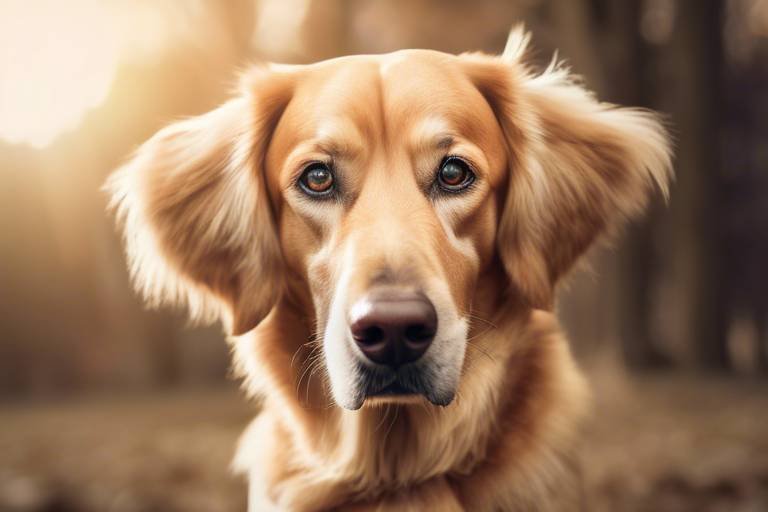How to Maintain a Healthy Weight in Cats
As a cat owner, you want nothing but the best for your furry friend, and maintaining a healthy weight is a crucial part of that care. Just like humans, cats can struggle with weight issues, and it can lead to a myriad of health problems. Imagine your cat as a little athlete; they need the right balance of nutrition and exercise to keep their energy levels high and their spirits even higher. In this article, we will explore effective strategies to help you keep your feline companion at a healthy weight, ensuring they live a long, happy life.
Obesity in cats is a growing concern that can lead to serious health issues, including diabetes, joint problems, and heart disease. But what causes our beloved pets to pack on the pounds? The reasons can vary, from overfeeding and lack of exercise to genetics and age. Recognizing when your cat is overweight is the first step in addressing the issue. A quick way to assess this is by checking their body condition score (BCS). Ideally, you should be able to feel their ribs without too much pressure, and they should have a noticeable waist when viewed from above. If your cat resembles a little barrel, it might be time to take action!
Providing a balanced diet is crucial for maintaining a healthy weight. Think of your cat's diet as a finely tuned engine; the right fuel is essential for optimal performance. High-quality cat food should be your priority, as it provides the necessary nutrients without the excess calories. Portion control is also vital; it’s easy to overestimate how much food your cat needs. Remember, treats can be a slippery slope, so use them sparingly and opt for healthier options whenever possible.
Selecting the right food can significantly impact your cat's weight. With so many options available, how do you know what to choose? Look for cat food that lists a high-quality protein source as the first ingredient, as this is essential for muscle maintenance. Avoid foods with excessive fillers like corn and soy, which can contribute to weight gain without providing real nutrition. Additionally, consider your cat's life stage—kittens, adults, and seniors all have different dietary needs.
Both wet and dry cat food have their benefits, and understanding these can help you make an informed choice for your cat's diet. Wet food is generally higher in moisture content, which can aid in hydration and is often more palatable for picky eaters. On the flip side, dry food can be more convenient and is great for dental health due to its crunchy texture. Ultimately, the best choice may be a mix of both, catering to your cat's preferences while ensuring they receive a balanced diet.
Feeding guidelines can vary by brand and your cat's specific needs, so it's essential to follow these recommendations closely. Overfeeding is one of the primary contributors to obesity, so be mindful of how much you’re dishing out. A good practice is to measure your cat's food rather than free-feeding. This way, you’ll have a clearer idea of how much they’re consuming. If you’re unsure, consult your veterinarian for personalized advice based on your cat’s age, weight, and activity level.
Regular physical activity is essential for weight maintenance in cats. Just like humans, cats need to move to burn off calories and stay healthy. But how do you encourage your feline friend to get off the couch? Think of playtime as a mini workout session! Engage your cat with interactive toys, laser pointers, or even simple cardboard boxes. Create an environment that stimulates their natural hunting instincts, and you’ll find that playtime becomes an enjoyable routine for both of you.
Regularly monitoring your cat's weight can help you catch potential issues early. Weighing your cat at home can be as simple as using a digital scale. Weigh yourself first, then weigh yourself holding your cat, and subtract the difference. This little check-in can help you stay on top of any weight fluctuations. Additionally, don’t forget the importance of regular vet check-ups; your veterinarian can provide valuable insights and adjustments to your cat’s diet and exercise plan.
Recognizing the signs of weight gain early can prevent obesity. Keep an eye out for physical indicators such as a rounder belly, difficulty grooming, or decreased activity levels. Behavioral changes, like increased lethargy or reluctance to play, can also signal that your cat may be gaining weight. If you notice any of these signs, it’s time to reassess their diet and activity levels.
Setting realistic weight goals for your cat is crucial for successful management. Think of it like a weight loss journey; it’s important to have a target to work towards. Start by consulting your vet to determine an ideal weight range for your cat. Then, create a plan that includes gradual changes to their diet and exercise routine. Tracking progress can be motivating, so consider keeping a journal or chart to monitor their weight over time.
- How can I tell if my cat is overweight? Look for a lack of a defined waist and difficulty feeling their ribs.
- What should I do if my cat is overweight? Consult your vet for a tailored weight loss plan, including diet and exercise adjustments.
- Are there specific breeds more prone to obesity? Yes, certain breeds like Persians and Ragdolls are more susceptible to weight gain.
- Can I use treats during weight loss? Treats can be given in moderation; opt for low-calorie options.

Understanding Cat Obesity
Obesity in cats is a growing concern that can lead to serious health issues, and as a responsible pet owner, it's crucial to understand this condition. Just like humans, when cats gain excess weight, they can face a myriad of health problems, including diabetes, arthritis, and even heart disease. But how do we recognize when our furry friends have crossed the line from healthy to hefty? The first step is understanding the causes of obesity.
One of the primary culprits is overfeeding. Many cat owners tend to give their pets more food than they actually need, often due to a lack of knowledge about their dietary requirements. Cats are natural hunters and have evolved to consume a diet high in protein, but that doesn’t mean they should be indulged with unlimited access to food. Portion control is essential. Additionally, sedentary lifestyles contribute to the problem; with indoor living becoming the norm, many cats don’t get enough exercise to burn off the calories they consume.
Recognizing the signs of obesity is equally important. A cat that is overweight may exhibit a few telltale signs, such as:
- Difficulty grooming themselves
- Reduced energy levels
- Visible fat deposits, especially around the abdomen
- Difficulty jumping or climbing
These indicators can help you gauge whether your cat is tipping the scales. But don't worry; if you suspect your cat is overweight, you're not alone. Many pet owners face this challenge, and the good news is that with the right approach, you can help your feline friend shed those extra pounds.
Now, let's talk about the consequences of obesity. Cats that carry excess weight are at a higher risk for developing serious health issues. For instance, obesity can lead to diabetes, which is not only difficult to manage but can also significantly affect your cat's quality of life. Moreover, the added weight puts extra stress on their joints, leading to conditions like arthritis. This can make it painful for them to move around, which only exacerbates the problem as they become even less active.
In summary, understanding cat obesity is about recognizing its causes and consequences. By being proactive and observant, you can help your cat maintain a healthy weight and avoid the pitfalls of obesity. Remember, a healthy cat is a happy cat, and it's our responsibility to ensure they live their best lives!

Balanced Nutrition for Cats
Providing a balanced diet is crucial for maintaining a healthy weight in your feline companions. Just like humans, cats need the right mix of nutrients to thrive. But what does that really mean? It means paying attention to their diet, understanding their nutritional needs, and making informed choices about what goes into their bowls. A well-balanced diet not only helps keep your cat's weight in check but also supports their overall health and well-being.
When it comes to cat food, quality matters. Look for products that list real meat as the first ingredient. Cats are obligate carnivores, which means they require a diet high in animal protein. However, it’s not just about protein; cats also need a variety of other nutrients, including fats, carbohydrates, vitamins, and minerals. A good rule of thumb is to choose cat food that meets the standards set by the Association of American Feed Control Officials (AAFCO). This ensures that the food is nutritionally complete and balanced.
Portion control is another vital aspect of maintaining a healthy weight. Even the best food can lead to weight gain if your cat is eating too much. It's essential to follow the feeding guidelines provided on the packaging, which typically recommend daily servings based on your cat's weight and activity level. For example, a sedentary indoor cat may require fewer calories than an active outdoor cat. This is where measuring food and being mindful of treats can make a significant difference.
Speaking of treats, they can play a role in your cat's diet, but moderation is key. Treats should not make up more than 10% of your cat's daily caloric intake. This means if you’re feeding your cat a diet of 200 calories a day, only 20 of those calories should come from treats. Opt for healthy options, like freeze-dried meat or low-calorie cat treats, and always account for these calories in their overall daily intake.
To give you a clearer picture of how to balance your cat's diet, here’s a simple table summarizing the essential components of a healthy cat diet:
| Nutrient | Importance |
|---|---|
| Protein | Supports muscle development and overall health |
| Fats | Provides energy and supports skin and coat health |
| Carbohydrates | Provides energy, though in smaller amounts than protein and fat |
| Vitamins & Minerals | Essential for various bodily functions and overall health |
In conclusion, maintaining a healthy weight in cats through balanced nutrition is about understanding their unique dietary needs, practicing portion control, and being mindful of the snacks you offer. By selecting high-quality food, monitoring portions, and providing healthy treats, you're setting your cat up for a long and healthy life. Remember, a happy cat is a healthy cat, and nutrition plays a huge role in that happiness!
1. How can I tell if my cat is overweight?
Look for physical signs like a lack of a defined waist, difficulty in feeling their ribs, and decreased activity levels. Regular vet check-ups can also help monitor their weight.
2. Can I feed my cat homemade food?
While it's possible, it's essential to ensure that homemade diets are balanced and meet all nutritional requirements. Consulting with a veterinarian is recommended.
3. What are the best types of treats for cats?
Healthy options include freeze-dried meat treats, dental chews, or low-calorie commercial treats. Always check the calorie content!
Choosing the Right Cat Food
When it comes to your cat's health, selecting the right food is like choosing the right fuel for a high-performance engine. Just as a race car wouldn't run on low-grade gasoline, your feline friend needs a diet that supports their unique nutritional requirements. But what does that mean exactly? It involves understanding the different types of cat food available and what to look for on the label.
First off, it's essential to know that not all cat foods are created equal. You'll encounter various options, including dry kibble, wet canned food, and even raw diets. Each type has its advantages and disadvantages. For instance, dry kibble is convenient and can help keep your cat's teeth clean, while wet food is higher in moisture, which is crucial for hydration. But how do you decide which is best for your furry companion?
Here are some key factors to consider when choosing cat food:
- Protein Content: Cats are obligate carnivores, which means they thrive on a diet rich in animal proteins. Look for foods where a high-quality meat source is listed as the first ingredient.
- Avoid Fillers: Ingredients like corn, wheat, and soy can be fillers that provide little nutritional value. Aim for food that prioritizes real meat and whole ingredients.
- Life Stage Appropriateness: Kittens, adults, and senior cats have different nutritional needs. Ensure you choose food formulated for your cat's specific life stage.
- AAFCO Approval: Check if the food meets the standards set by the Association of American Feed Control Officials (AAFCO). This ensures the food is nutritionally adequate.
Additionally, you might want to consider your cat's specific health needs. For example, if your cat has a sensitive stomach or allergies, you may need to select specialized diets. Always consult with your veterinarian to determine the best dietary options tailored for your cat's health.
Lastly, don't forget to read the labels! Understanding what goes into your cat's food can help you make an informed decision. Look for transparency in ingredients and avoid foods with vague terms like "meat by-products." Instead, opt for brands that clearly specify the source of their protein, such as "chicken" or "salmon." A nutritious diet is the foundation of a healthy weight, so take the time to choose wisely.
In conclusion, choosing the right cat food is a crucial step in maintaining your feline's health and weight. By being informed and attentive to your cat's dietary needs, you can help ensure they live a long, happy, and healthy life.
Q: How can I tell if my cat is overweight?
A: Look for physical signs such as difficulty feeling their ribs, a noticeable belly, or a lack of an hourglass shape when viewed from above. Behavioral changes, like decreased activity, can also be indicators.
Q: Should I feed my cat wet or dry food?
A: Both have their benefits. Wet food can help with hydration, while dry food is often more convenient. A mix of both may provide a balanced diet.
Q: How often should I feed my cat?
A: It depends on your cat's age and activity level. Generally, adult cats can be fed twice a day, while kittens may require more frequent meals.
Q: Can I give my cat treats?
A: Yes, but moderation is key. Treats should make up no more than 10% of your cat's daily caloric intake to avoid weight gain.
Wet vs. Dry Food
When it comes to choosing the right food for your cat, the debate between wet and dry food can feel overwhelming. Each type has its own unique benefits and drawbacks, and understanding these can help you make the best choice for your feline friend. Let’s dive into the pros and cons of both options to help you find the perfect fit for your kitty’s dietary needs.
Wet food, often found in cans or pouches, is typically higher in moisture content, which is beneficial for your cat's hydration. This is particularly important since many cats do not drink enough water on their own. The soft texture of wet food can also be easier for older cats or those with dental issues. However, wet food can be more expensive and may spoil quickly once opened, requiring you to manage leftovers carefully.
On the other hand, dry food is convenient, can be left out for longer periods without spoiling, and is generally more affordable. It also helps in maintaining dental health by reducing tartar buildup as your cat chews. However, dry food lacks the moisture content that wet food provides, which can lead to dehydration if your cat doesn’t drink enough water. Additionally, some dry foods can be high in carbohydrates, which may not be ideal for weight management.
To help you weigh your options, here's a quick comparison:
| Feature | Wet Food | Dry Food |
|---|---|---|
| Moisture Content | High | Low |
| Cost | Generally higher | Generally lower |
| Dental Health | Less effective | More effective |
| Convenience | Less convenient | More convenient |
| Storage | Requires refrigeration after opening | Long shelf life |
Ultimately, the best choice often comes down to your cat's specific needs, preferences, and health conditions. Many pet owners find that a combination of both wet and dry food works well, providing the benefits of each while keeping mealtime exciting for their furry companions. Remember, it’s always a good idea to consult with your veterinarian when making significant changes to your cat’s diet.
- Can I mix wet and dry food? Yes, many cat owners successfully mix both types to provide a balanced diet and keep their cats interested in their meals.
- How much should I feed my cat? It depends on your cat's age, weight, and activity level. Always follow the feeding guidelines on the cat food packaging and consult your vet for personalized recommendations.
- Is wet food better for hydration? Yes, wet food contains a higher moisture content, which can help keep your cat hydrated, especially if they don't drink enough water.
Understanding Feeding Guidelines
Feeding guidelines are like roadmaps for your cat’s nutrition; they help ensure that your furry friend is getting the right amount of food without overindulging. Just like humans, cats have different dietary needs based on their age, weight, activity level, and overall health. It's essential to pay attention to the feeding guidelines provided by the cat food manufacturer, as they can vary significantly between brands and types of food.
To avoid the pitfall of overfeeding, start by checking the serving sizes indicated on the packaging. These guidelines typically suggest a daily amount based on your cat's weight. For instance, a cat weighing around 10 pounds may require approximately 1/2 to 3/4 cup of dry food daily. However, this is just a starting point; you may need to adjust based on your cat's individual needs. Remember, every cat is unique, and factors such as metabolism and activity level can affect how much they should eat.
Here’s a quick breakdown of some essential factors to consider when following feeding guidelines:
- Age: Kittens require more calories than adult cats due to their growth and energy levels, while senior cats may need fewer calories.
- Activity Level: An active cat may need more food than a couch potato. If your cat is more of a napper than a hunter, adjust their portions accordingly.
- Health Conditions: If your cat has specific health issues, such as diabetes or kidney disease, consult your veterinarian for tailored feeding advice.
Additionally, don’t forget to account for treats in your cat's daily calorie intake! Treats can be a wonderful way to bond with your pet, but they should only make up a small portion of their diet. Ideally, treats should not exceed 10% of your cat's total daily caloric intake. If you're unsure how to calculate this, a simple formula is to multiply the total daily calories by 0.10 to determine the maximum calorie allowance for treats.
Lastly, always monitor your cat's weight and body condition. If you notice your cat gaining weight, it may be time to reassess the feeding guidelines and adjust the portions accordingly. Keeping a close eye on your cat's body condition score can help you determine if they are at a healthy weight. If you're unsure, your veterinarian can provide guidance on how to evaluate your cat's body condition and recommend adjustments to their diet.
Importance of Regular Exercise
Just like humans, cats need regular exercise to maintain a healthy weight and overall well-being. You might think that your cat is just lounging around, but believe it or not, a little movement can go a long way! Cats are naturally playful creatures, and tapping into that instinct can help keep them fit and active. Think of exercise as a fun game rather than a chore, and you'll find it easier to incorporate it into your cat's daily routine.
Regular physical activity not only helps in weight management but also improves your cat's mood and reduces stress. When cats engage in play, they release endorphins, which can lead to a happier and more content feline. So, how can you encourage your furry friend to get off the couch and start moving? Here are some strategies:
- Interactive Toys: Toys that require your cat to chase, pounce, or hunt can stimulate their natural instincts. Think feather wands, laser pointers, and even balls that roll around.
- Scheduled Playtime: Setting aside a few minutes each day for dedicated play can create a routine. Cats thrive on consistency, and knowing that playtime is coming can get them excited!
- Cat Trees and Scratching Posts: These not only provide a place for your cat to climb and scratch but also encourage them to be active. A good cat tree can be a mini gym for your feline!
Incorporating exercise into your cat's life doesn't have to be complicated. Even simple activities like tossing a ball or hiding treats around the house can get your cat moving. The key is to make it enjoyable for both of you. Remember, the more fun your cat has, the more likely they are to engage in physical activity.
Moreover, keeping an eye on your cat's weight is essential. If you notice that your cat is becoming less active or gaining weight, it might be time to reassess their exercise routine. Just like us, cats can become less active as they age, so adjusting their playtime to suit their energy levels is crucial. Regular exercise not only helps maintain a healthy weight but also keeps their muscles toned and joints flexible, reducing the risk of arthritis and other health issues.
In conclusion, regular exercise is a vital component of your cat's health and well-being. By integrating fun and engaging activities into their daily routine, you can help your feline friend stay fit, happy, and healthy for years to come. So, grab that feather toy, and let the games begin!
1. How much exercise does my cat need?
Most cats should aim for at least 15-30 minutes of active play each day. However, this can vary based on age, breed, and health. Always consult with your vet for personalized recommendations.
2. What are some signs my cat is overweight?
Look for signs such as difficulty in grooming, a noticeable belly, and lethargy. If you can’t feel their ribs easily or if they have a rounded appearance, it might be time to reassess their diet and exercise.
3. Can I exercise my cat indoors?
Absolutely! Many cats can get plenty of exercise indoors through interactive toys, climbing structures, and even games like hide-and-seek!
4. Is it normal for my cat to be less active as they age?
Yes, older cats may naturally slow down. However, it's essential to keep them engaged and active within their comfort zone to maintain their health.

Monitoring Your Cat's Weight
Keeping an eye on your cat's weight is more than just a good habit; it's a vital part of ensuring their health and longevity. Just like us, cats can easily gain weight, and the consequences can be serious. Regular monitoring allows you to catch any potential issues early, making it easier to implement changes before they escalate into more significant health problems. So, how do you effectively monitor your feline friend’s weight? Let’s dive in!
First and foremost, establishing a routine for weighing your cat is essential. Ideally, you should weigh your cat at least once a month. This will help you track any gradual changes in weight. You can use a standard bathroom scale if your cat is small enough to hold or consider investing in a pet scale for more accurate measurements. To weigh your cat using a bathroom scale, follow these simple steps:
- Weigh yourself first and note the weight.
- Hold your cat and step back on the scale.
- Subtract your weight from the total weight to find your cat's weight.
It's also important to remember that weight isn't the only indicator of your cat's health. You should also pay attention to their body condition score (BCS). This score can help you assess whether your cat is underweight, at a healthy weight, or overweight. A simple way to check this is by feeling your cat's ribs; you should be able to feel them without too much pressure, and there should be a noticeable waist when viewed from above. If you’re unsure about how to assess your cat's body condition, your veterinarian can help guide you.
In addition to weighing your cat, regular vet check-ups are crucial. Your vet can provide valuable insights and recommendations tailored to your cat's specific needs. They may suggest a weight management plan if your cat is gaining weight or even losing weight too quickly. Remember, prevention is always better than cure, and maintaining regular vet visits can help you stay ahead of any potential weight-related issues.
Now, let’s talk about the signs of weight gain. Recognizing these signs early can make a world of difference. Some common indicators include:
- Difficulty feeling your cat's ribs.
- Fat deposits on their back or belly.
- Reduced activity levels or lethargy.
- Changes in grooming behavior; your cat may groom less if they’re overweight.
Tracking your cat’s weight and health indicators can feel overwhelming, but it doesn’t have to be! Setting realistic weight goals is crucial for effective management. Work with your vet to establish a target weight based on your cat's breed, age, and overall health. Keep in mind that weight loss should be gradual; a safe rate is usually about 1% to 2% of their body weight per week. This approach not only promotes better health but also helps your cat adapt to their new lifestyle.
In conclusion, monitoring your cat's weight is essential for their overall health. By regularly weighing your cat, assessing their body condition, and consulting with your veterinarian, you can help prevent obesity and its associated health risks. Remember, a little attention goes a long way in ensuring your furry friend lives a happy and healthy life!
Q: How often should I weigh my cat?
A: It’s recommended to weigh your cat at least once a month to monitor any changes in weight.
Q: What is a healthy weight for my cat?
A: A healthy weight varies by breed and age. Consult your veterinarian to determine the ideal weight for your cat.
Q: Can I use a regular scale to weigh my cat?
A: Yes, you can use a regular bathroom scale. Just weigh yourself first, then weigh yourself holding your cat and subtract your weight to find your cat's weight.
Q: What should I do if my cat is overweight?
A: Consult your veterinarian for a weight management plan that includes dietary changes and increased physical activity.
Signs of Weight Gain
As a cat owner, it’s essential to be vigilant about your feline friend's health, particularly when it comes to their weight. Just like humans, cats can struggle with weight issues, and catching these problems early can be a game changer. So, how can you tell if your cat is packing on the pounds? There are several clear signs to watch for that can indicate your cat may be gaining weight.
One of the most noticeable signs is a change in your cat's body shape. If your cat's waistline disappears and they appear more rounded, this could be a red flag. Ideally, you should be able to see a slight indentation at their waist when viewed from above. If your cat seems to have a more cylindrical shape, it might be time to reassess their diet and exercise routine.
Another sign is difficulty in grooming. Cats are known for their meticulous grooming habits, but if your furry friend is struggling to reach certain areas—like their belly or the base of their tail—it could be because they’ve gained weight. This change can lead to matting and skin issues, which can further complicate their health.
Additionally, pay attention to your cat's energy levels. A sudden drop in activity or an increase in lethargy can be an indication of weight gain. If your once playful kitty is now lounging around more often or seems less interested in their favorite toys, it might be time to check in with your vet. Cats are naturally curious and active creatures, and a significant shift in behavior can signal underlying health issues.
Lastly, keep an eye on their eating habits. If your cat seems to be begging for food more often or finishing their meals quickly, they might not be getting enough nutrition, leading to overeating. It's essential to monitor both the quality and quantity of their food. Remember, treats can add up quickly, so be mindful of how many you’re giving them.
To summarize, here are some key signs that your cat may be gaining weight:
- Change in body shape, particularly a lack of a defined waistline
- Difficulty grooming themselves
- Decreased energy levels and increased lethargy
- Increased begging or rapid eating habits
By keeping an eye out for these signs, you can help ensure your cat remains healthy and happy. If you notice any of these changes, consider consulting with your veterinarian to develop a plan tailored to your cat's needs.
Q: How often should I weigh my cat?
A: It's a good idea to weigh your cat at least once a month to monitor any changes in their weight. Regular vet check-ups can also help keep track of their health.
Q: What is the best way to help my cat lose weight?
A: A combination of a balanced diet and regular exercise is key. Consult your veterinarian for a weight loss plan that suits your cat's specific needs.
Q: Are there specific breeds that are more prone to obesity?
A: Yes, certain breeds, like Persians and Ragdolls, may be more prone to obesity. Always be aware of your cat's breed tendencies when managing their weight.
Q: Can I give my cat human food as treats?
A: Some human foods are safe for cats in moderation, like cooked chicken or fish. However, always check with your vet before introducing new foods to ensure they are safe and healthy for your cat.
Setting Weight Goals
Setting realistic weight goals for your cat is an essential part of maintaining their health and well-being. Just like us, our furry friends can struggle with weight management, and having clear, achievable goals can make all the difference. So, how do you go about establishing these goals? First, it's crucial to understand your cat's ideal weight range, which can vary based on their breed, age, and overall health. Consulting with your veterinarian is a great starting point, as they can provide tailored advice based on your cat's specific needs.
Once you have a target weight in mind, consider creating a structured plan to help your cat reach that goal. This plan should include:
- Dietary Adjustments: Gradually change your cat's diet to one that is lower in calories but still nutritionally balanced. Look for high-quality cat foods that are designed for weight management.
- Portion Control: Measure out your cat's food to ensure you're not overfeeding. Using a scale can be helpful, and many cat food bags provide feeding guidelines based on weight.
- Increased Activity: Incorporate more playtime into your cat's daily routine. This can include interactive toys, laser pointers, or even simple games of chase. Aim for at least 15-20 minutes of play each day.
Tracking progress is vital as well. Regularly weighing your cat can help you see if they are moving towards their goal. A simple way to do this is to use a digital scale; just be sure to weigh yourself first, then hold your cat and subtract your weight from the total. You can create a table to log these weights over time, which will help you visualize their progress:
| Date | Weight (lbs) | Notes |
|---|---|---|
| 01/01/2023 | 12.5 | Initial weight |
| 02/01/2023 | 12.0 | Weight loss progress |
| 03/01/2023 | 11.5 | On track to goal |
It's important to remember that weight loss should be gradual. A safe rate is typically around 1-2% of your cat’s body weight per week. Rapid weight loss can lead to serious health issues, including hepatic lipidosis, a potentially life-threatening liver condition. Therefore, patience is key! Celebrate small victories along the way, and don't hesitate to adjust your goals as needed based on your cat's progress.
Lastly, keep in mind that weight management is an ongoing journey. Once your cat reaches their target weight, maintaining that weight is just as crucial. Regular vet check-ups, continued monitoring, and a consistent routine will help ensure your cat remains healthy and happy for years to come.
Q: How often should I weigh my cat?
A: It's advisable to weigh your cat once a week to track their progress effectively, but consult your vet for personalized recommendations.
Q: What should I do if my cat is not losing weight?
A: If your cat isn't losing weight despite your efforts, revisit your feeding and exercise plan. Consider consulting your veterinarian for further guidance.
Q: Can I give my cat treats while trying to manage their weight?
A: Yes! Just be mindful of the quantity and choose healthier options. Treats should make up no more than 10% of your cat's daily caloric intake.
Frequently Asked Questions
- What are the main causes of obesity in cats?
Obesity in cats can stem from various factors, including overfeeding, lack of exercise, and genetics. Many cats are prone to weight gain if they consume more calories than they burn, which often happens when they are fed high-calorie diets or too many treats without sufficient physical activity.
- How can I tell if my cat is overweight?
To determine if your cat is overweight, you can check for a few key indicators. Look for a visible waist when viewed from above and feel for ribs without excessive fat covering. If you can't easily feel your cat's ribs, it may be time to reassess their diet and activity levels.
- What type of food should I feed my cat to maintain a healthy weight?
Choosing high-quality cat food that is specifically formulated for weight management is essential. Look for foods that are high in protein and low in carbohydrates. It's also important to follow feeding guidelines based on your cat's age, weight, and activity level to avoid overfeeding.
- Is wet food better than dry food for weight management?
Both wet and dry food have their advantages. Wet food typically has higher moisture content, which can help keep your cat hydrated and may aid in weight loss. Dry food, on the other hand, can be more convenient and help with dental health. Ultimately, the best choice depends on your cat's preferences and dietary needs.
- How much exercise does my cat need?
Cats need regular exercise to maintain a healthy weight, ideally engaging in at least 15-30 minutes of play each day. This can include interactive toys, laser pointers, or even simple playtime with you. The key is to find activities that your cat enjoys to keep them active.
- How often should I weigh my cat?
It's a good idea to weigh your cat at least once a month to monitor their weight. Regular check-ups with your vet are also crucial, as they can help track your cat's weight over time and provide professional advice tailored to your cat's specific needs.
- What are some signs that my cat is gaining weight?
Watch for physical signs such as a rounder belly, difficulty grooming, or a noticeable lack of energy. Behavioral changes, like decreased playfulness or increased sleeping, can also indicate weight gain. Recognizing these signs early can help you take action before obesity becomes a serious issue.
- How can I set realistic weight goals for my cat?
Setting realistic weight goals involves consulting with your veterinarian to determine a healthy weight range for your cat. From there, you can create a gradual weight loss plan, aiming for a safe reduction of 1-2% of their body weight per week. Tracking progress regularly will help keep you motivated and on the right path.

